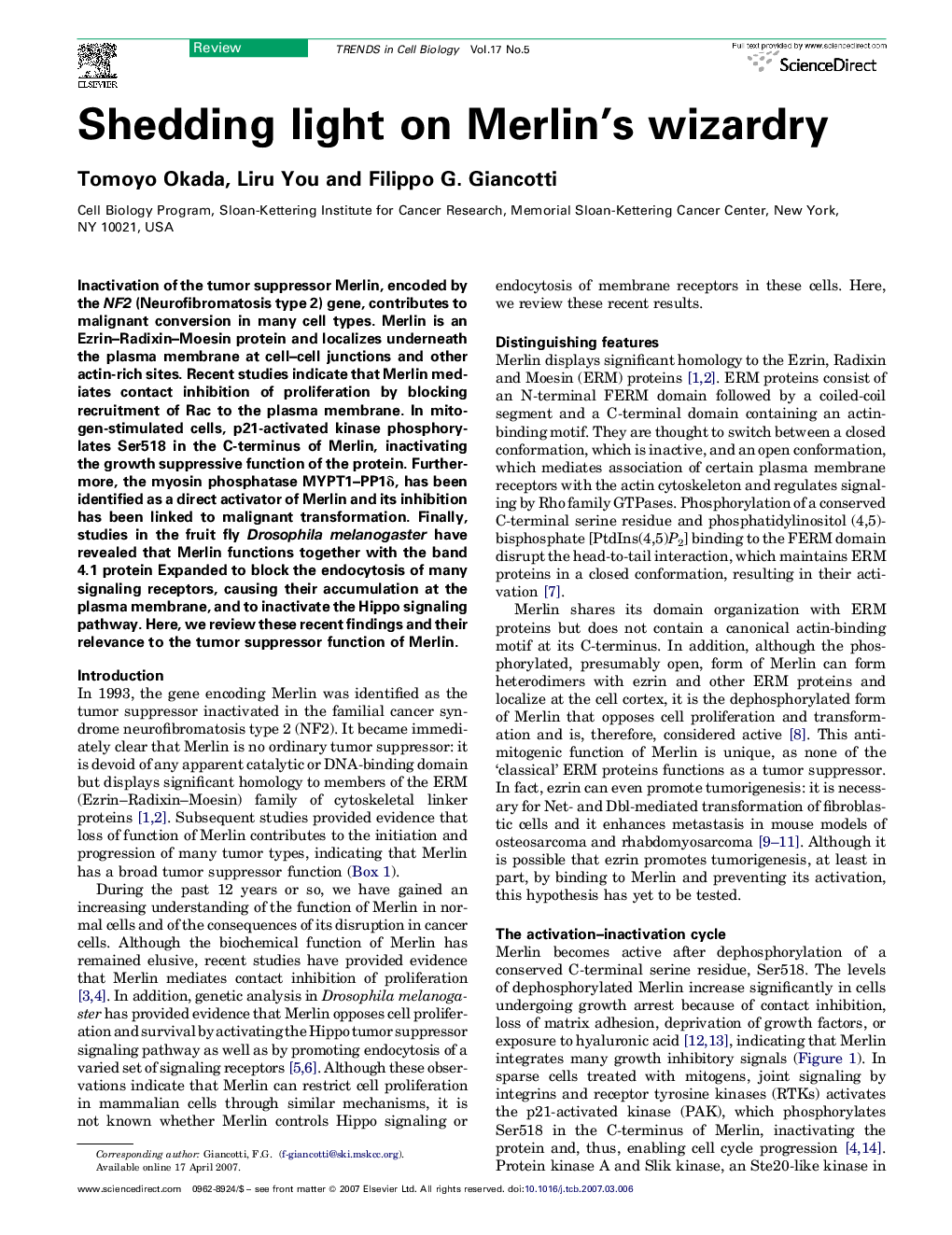| Article ID | Journal | Published Year | Pages | File Type |
|---|---|---|---|---|
| 2205234 | Trends in Cell Biology | 2007 | 8 Pages |
Inactivation of the tumor suppressor Merlin, encoded by the NF2 (Neurofibromatosis type 2) gene, contributes to malignant conversion in many cell types. Merlin is an Ezrin–Radixin–Moesin protein and localizes underneath the plasma membrane at cell–cell junctions and other actin-rich sites. Recent studies indicate that Merlin mediates contact inhibition of proliferation by blocking recruitment of Rac to the plasma membrane. In mitogen-stimulated cells, p21-activated kinase phosphorylates Ser518 in the C-terminus of Merlin, inactivating the growth suppressive function of the protein. Furthermore, the myosin phosphatase MYPT1–PP1δ, has been identified as a direct activator of Merlin and its inhibition has been linked to malignant transformation. Finally, studies in the fruit fly Drosophila melanogaster have revealed that Merlin functions together with the band 4.1 protein Expanded to block the endocytosis of many signaling receptors, causing their accumulation at the plasma membrane, and to inactivate the Hippo signaling pathway. Here, we review these recent findings and their relevance to the tumor suppressor function of Merlin.
